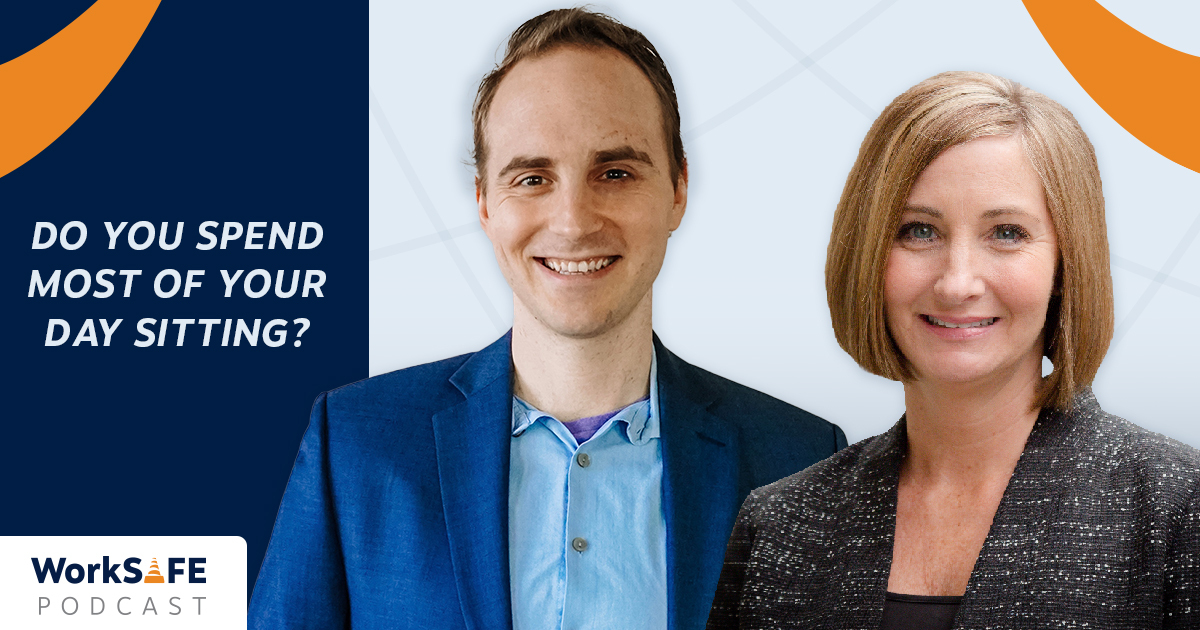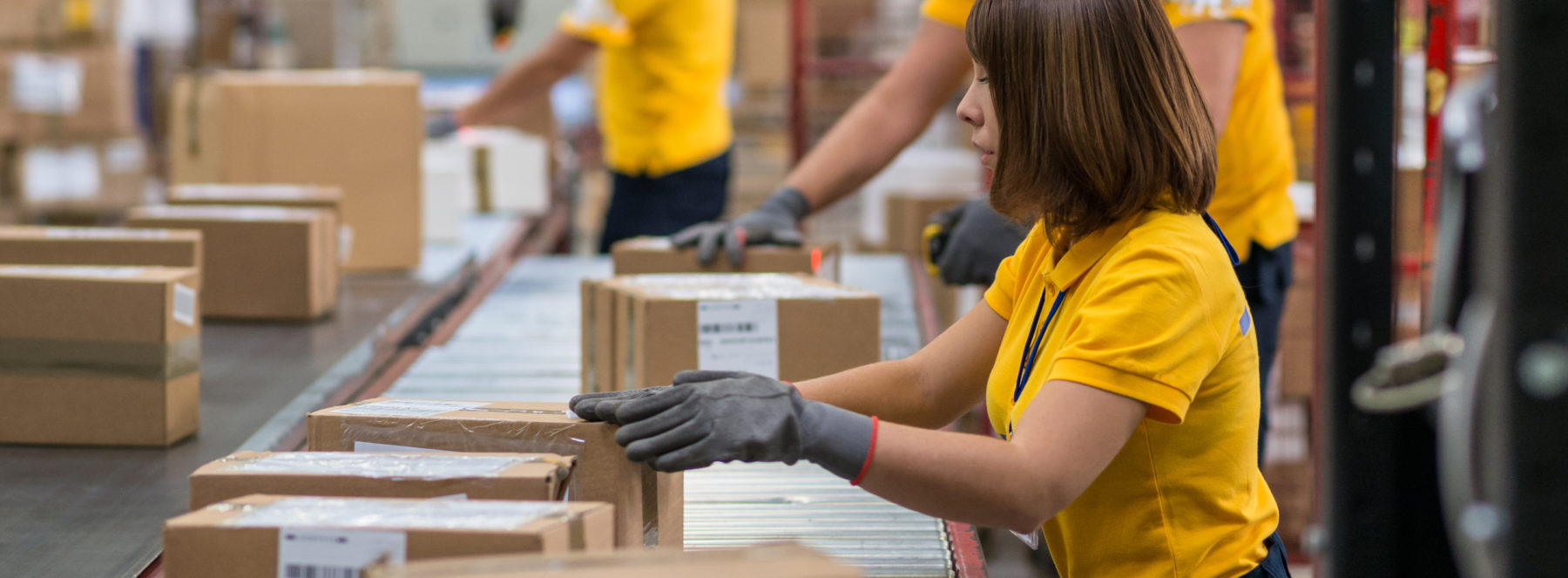For Media Inquiries
Contact Revee White, Director of Marketing and Communications at rwhite1@mem-ins.com or 573.499.4190.
More than 80% of today’s U.S. workforce is made up of sedentary jobs. For most people, this means their workday is spent sitting in a chair. Staying seated for hours isn’t great for the human body. It can cause constant aches and pains. Over time, it can even cause long-term physical damage. In today’s culture, sitting has gained a reputation as “the new smoking”. Despite all the health concerns around it, many people feel like they just can’t avoid it on the job.
On the episode of the WorkSAFE Podcast, we welcome physical therapy professional Dr. Stefan Zavalin. He has a vision to bring more movement to everyday lift. His consulting business, Love to Move, helps people reduce their sitting time and improve their overall wellbeing.
First, we’ll discuss why more exercise isn’t the solution to too much sitting. Then, we’ll talk about the short- and long-term impacts of sitting. Finally, we’ll share some ways employers and employees can incorporate more standing into their day.
Listen to this episode on the WorkSAFE Podcast, or read the show notes below.
Sitting: Why more exercise isn’t the solution
Movement is a passion for Dr. Zavalin. An active childhood led him to pursue an undergraduate degree in kinesiology, the study of how the human body moves. He then continued his love for exercise science with a doctorate degree in physical therapy.
Pain was a common thread among Dr. Zavalin’s first patients. Back and neck pain made life uncomfortable. At first, he would teach them exercises to relieve the strain. They would finally find relief after several weeks of therapy, and consider the problem solved. However, the pain would return the following year – and so would the patients.
Most of his patients sat at work during the workday. Exercise offered a little bit of relief. But it wasn’t the solution. Persistent movement was. Without minimizing their sitting time, their aches and pains would simply continue. Dr. Zavalin encouraged them to talk to their managers. Few of them actually did. Even when they worked up the courage to ask for changes, they didn’t really happen. Employers just weren’t on board.
“I realized in this attempt to do the one-on-one, I was just fixing the symptoms,” Dr. Zavalin explained. “I wasn’t fixing the actual problem. So that led me to starting the business of making sure to go in and get employers onboard, as well as the employees.”
How sitting is bad for bodies and blood flow
Sitting less during the workday is a challenge in many industries. Much of the American work culture revolves around it. We sit through meetings, phone calls and behind computers. Lunch usually happens at a break room table. Couches and chairs are at the center of coffee and catching up with coworkers. For remote workers, nearly all of these daily tasks probably take place at their desk. But why is sitting so damaging to our bodies?
Short-term impact of sitting
After just thirty minutes, the impact of sitting begins. We experience less blood flow to the brain. This means we’re not thinking as quickly. As a result, our productivity also goes down. Dr. Zavalin also notes that our ability to break down fat drops drastically; sometimes by nearly 80 to 90 percent. In addition, many of us lean forward while working. We rest our chins in our hands, or get closer to the screen. Doing this reduces the flow of oxygen to our brain. However, just one to two minutes of movement can effectively eliminate these issues.
Long-term impact of sitting
Now, imagine the impact hours of sitting without a break can have, for weeks, months or even years at a time. “At 8 hours, you’ve got a doubled risk of cardiovascular disease; which even with the pandemic, cardiovascular disease has still been the number one killer in the States,” he shared. Sitting has both short- and long-term effects. “You mentioned at the very beginning of the episode sitting as the new smoking,” he remarked. “Sitting eleven or more hours increases the risk of premature death by 40 percent.”
Exercise vs. movement
“Exercise and movement are different,” Dr. Zavalin explains. “Exercise is a type of movement. All movement is not exercise.” When it comes to sitting too much, movement is more important. Exercise is great, but just a few minutes of it can’t counter hours of sitting. Many employers focus on productivity. It may be tempting to try to add physical activity to an employee’s current workload. But to Dr. Zavalin, that’s a recipe for burnout. “The idea is reducing the bad instead of adding more of the good,” he added.
For example, an employer might encourage employees to go for a walk during their lunch hour. Dr. Zavalin doesn’t discourage that. “A walk at lunch is fantastic. You should absolutely do it,” he said. “But there’s only so many minutes or hours that you can necessarily walk.” Instead, he suggests finding times where employees can sit less. Have a meeting where everyone stands up. Employees working from the office or at home can participate. This way, employees sit less without it becoming an additional responsibility. Further, doing it as a group makes it more normal.
Get moving: 5 small changes you can start today
Employers may think they need to change the culture of sitting right away. But this just isn’t the case. Eliminating hours of sitting doesn’t happen overnight. Companies don’t need to put a ton of policies in place to make a positive change. Dr. Zavalin suggests trying the following ideas:
- Start or end a meeting standing up. Have employees stand up for the first 5-10 minutes of a meeting. If they are working remotely, they can turn their cameras off during this time if they prefer. You can also end a meeting a few minutes early, leaving time for team members to stand and stretch.
- Create a standing desk setup. Standing desks are a great way to get work done on your feet. For a huge company, buying standing desks may sound like an intimidating investment. But Dr. Zavalin himself doesn’t use a standing desk; a stack of books raises his work surface to standing height. Kitchen counters or bar tables can help employees explore if a standing desk might be a good solution.
- Walking phone calls. Many of naturally pace during personal phone calls. Work phone calls can be done the same way. Dedicate phone time to walking; indoors in your workspace, or even outside if the weather permits.
- Stand during specific tasks. Choose a routine task and stand while you do it. Answering emails? A quick sweep of the kitchen or front porch after lunch? Transitioning to a new piece of machinery or equipment? Use this time to work more standing into your day.
- Plan rest between meetings. In a virtual workplace, it’s easy to get caught on the wave of meetings. Back-to-back appointments keep of us from taking breaks. Block time to take a quick stretch or walk. For example, plan to end a meeting a few minutes early to allow for some transition time.
Ergonomics reduce strain but aren’t the solution
Whether employees work at home or the office, ergonomics are important. They help prevent strains and sprains over time. Ergonomics professionals can help find the most comfortable working positions. But they also recommend frequent breaks – and most employees don’t take them. “You can have the absolute best setup ever,” Dr. Zavalin explained. “If you don’t move, and you sit for 4 hours straight, it’s not going to be good for you.”
Standing more: A low investment with a high payoff
Standing more is a habit that needs to be built. It’s important for employers to support it. Employees may feel self-conscious doing it at first. However, they are more likely to if their own team members and managers embrace it. Most importantly, these behavior changes cost employers little to nothing while benefiting employees. For Dr. Zavalin, this is the most valuable part of the process. “Let’s build the habits, because those aren’t going to necessarily cost us as much as all the equipment is going to cost.” Standing benefits bodies, and businesses, leading them both to a better future.
For free safety posters, sample policies, and safety toolkits, visit our Resource Library. Then, check out this WorkSAFE Podcast episode on encouraging employees to buy in to safety efforts.

